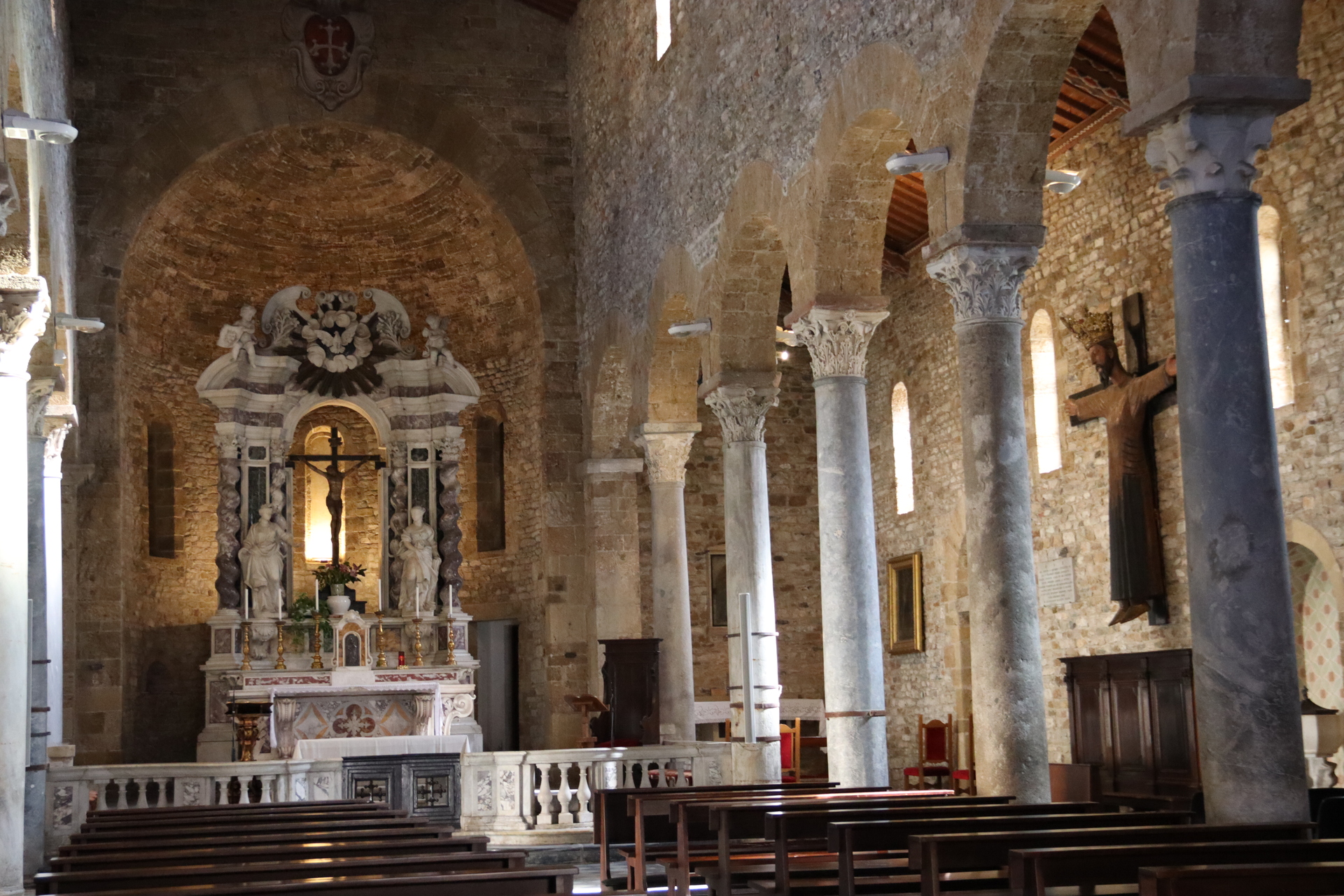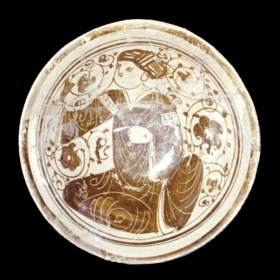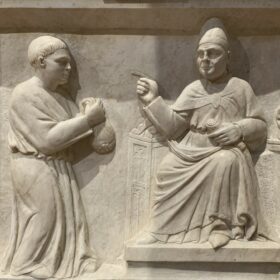
Il cartello è stato realizzato in occasione del Giubileo 2025. Per informazioni visita il sito ufficiale del giubileo https://www.iubilaeum2025.va/it.html
The church is completely made of stone, decorated with blind arches and ceramic basins (the originals are exhibited at the National Museum of San Matteo). The mullioned window on the façade is a twentieth-century makeover and the twelfth-century bell tower was restored several times over the centuries. The interior of the church, with three naves, divided by columns and reclaimed capitals, reflects the sobriety of the exterior. The entrance is dominated by the presence of flags of the ancient districts of Pisa and an 11th century Arabic epigraph is displayed on the counter-façade. The trussed ceiling shows nineteenth-century traces of colour, while the symbol of Pisa, the cross, stands out on the high altar. The main altar is the most notable element: sculpted in 1730 by Andrea Vaccà for the small oratory of San Rocco, in Piazza dei Cavalieri. Of great value is the beautiful wooden crucifix made on a model of Volto Santo from Lucca (1370), placed on the right wall, which is one of the rare copies in Italy.
History in a nutshell: The church was founded in 1087 and dedicated to San Sisto in honour of the victory over the Saracens of Al Mahdiya and Zawila on 6 August. Until modern times, the church was under the patronage of the Municipality, which carried out the certification of deeds in the building. The appearance of the structure is the result of numerous restorations carried out between the 19th and 20th centuries.
The Arabic epigraph: The church is a monument to the intense and complex relationship between Pisa and the Islamic world in the Middle Ages. The ceramic basins, in most cases of Islamic origin, are the first indication of the multicultural context that characterised the city during its period of maximum expansion, which took place in the 11th and 12th centuries. Al Mahdiya and Zawila were key points for Mediterranean trade, carried out by Pisan merchants and plagued by frequent attacks by pirates. In 1087 Pisa, Genoa and Amalfi intervened in restoring peace in the territory, the church was born from the success of the enterprise, which became the symbol of the nascent municipality and its power in the Mediterranean. For this reason, the Arabic epigraph, in Kufic script, stolen from the Balearic Islands in 1115 was placed on the counter-façade. In the name of God, the Merciful, the Merciful! Men: what God promises is true! May worldly life not deceive you! May the Deceiver not deceive you about God! Emir Abu Nasr is dead – May God make his face shine on Muhammad. The epigraph was in honour of Emir al Murtadà, who died on Saturday 7 January 1094.

